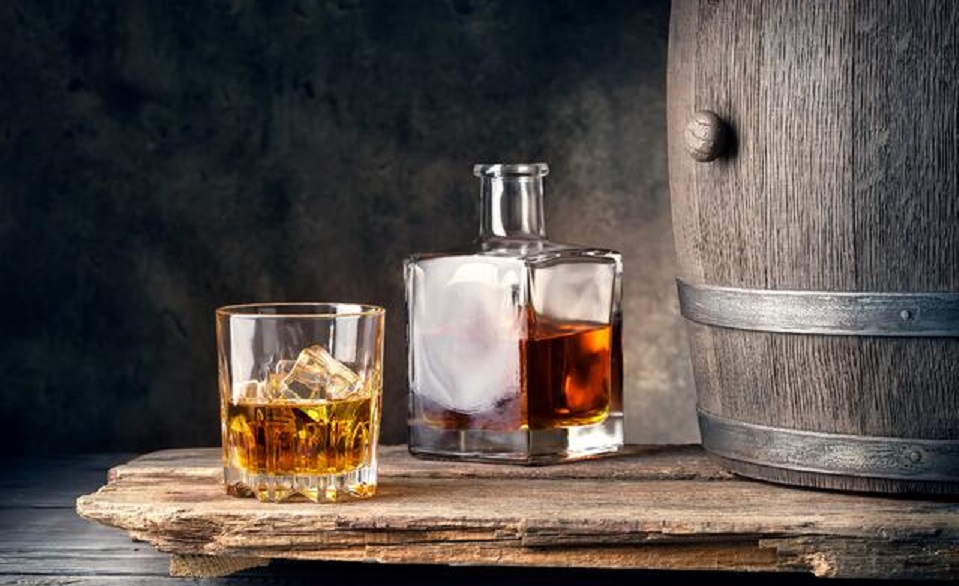When you’re enjoying a dram of whisky with friends try toasting in Gaelic. Simply raise your glass and say ‘slàinte mhath’ (pronounced: slan-tche vah), which means ‘cheers’ or ‘good health’.
Scotch Whiskey
All Scotch is Whisky, but not all Whisky is Scotch. Whiskey is an alcoholic beverage distilled from grain, which may or may not have been malted. Scotch is whisky made in Scotland and aged in oak barrels for at least three years. The art of distilling whisky began as a way of using up rain-soaked barley and, as it still does today, used water from Scotland’s crystal streams and burns. Scotch or Scotch whiskey is made only in Scotland and Whiskey is a type of distilled alcoholic beverage made in other parts of the world.
Scottish whisky is among the world’s most revered spirits. There are varying styles, some are flavoured heavily by peat and smoke, others are light and fruity.
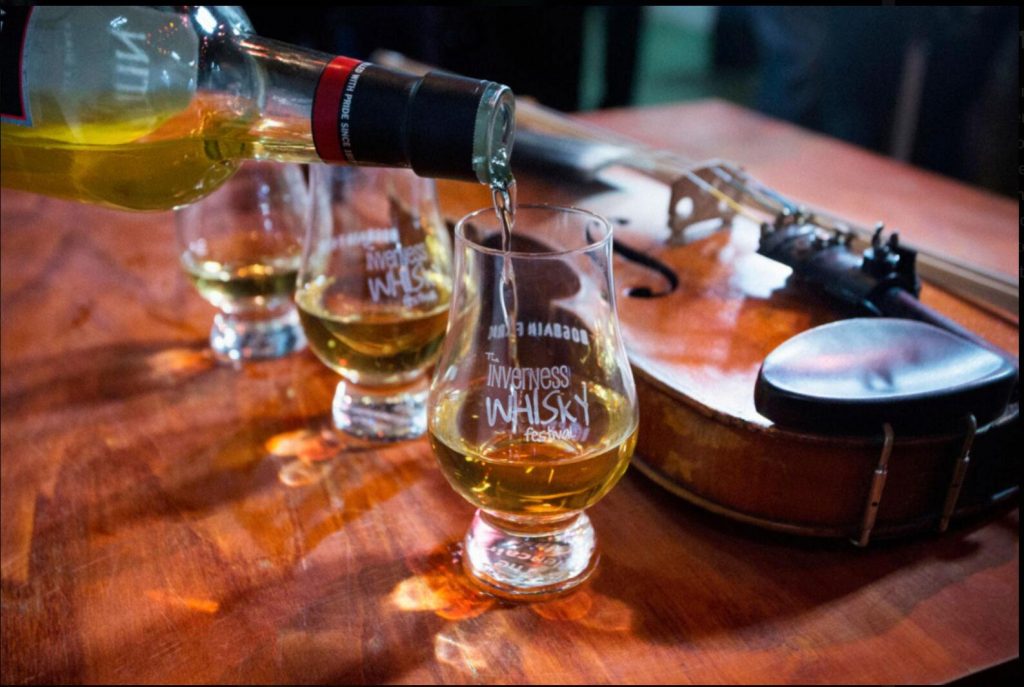
Scotch whiskies are generally distilled twice, although some are distilled a third time and others even up to twenty times. Scotch Whisky Regulations require anything bearing the label “Scotch” to be distilled in Scotland and matured for a minimum of three years in oak casks, among other, more specific criteria. Any age statement on the bottle, in the form of a number, must reflect the age of the youngest Scotch whisky used to produce that product. A whisky with an age statement is known as guaranteed age whisky. Scotch whisky without an age statement may, by law, be as young as three years old.
The history of Scotch Whiskey
It is generally agreed that monks brought distillation with them along with Christianity in the fourth and fifth centuries. The first official recording of distilling stretches back to 1494, when Friar John Cor of Lindores Abbey in Fife was granted the king’s commission to make acqua vitae, Latin for ‘water of life’.
The first official taxes on whisky production were not imposed until 1644, causing a rise int illicit whisky distilling in the country. Around 1780, there were about eight legal distilleries and 400 illegal ones. In 1823, Parliament eased restrictions on licensed distilleries with the Excise Act, while at the same time making it harder for the illegal stills to operate, thereby ushering in the modern era of Scotch production.
Two events helped to increase the popularity of whisky: firstly, a new production process was introduced in 1831 using a Coffey or patent still. The whisky produced with this process was less intense and smoother. Secondly, the Phylloxera beetle destroyed wine and cognac production in France in 1880, meaning that stocks of both in cellars around the world dwindled to almost nothing.
Since then, whisky production has gone from strength to strength, weathering prohibition in the United States, two world wars, the Great Depression and economic recessions throughout the 20th and 21st centuries. Today, it is enjoyed in over 200 countries around the world.
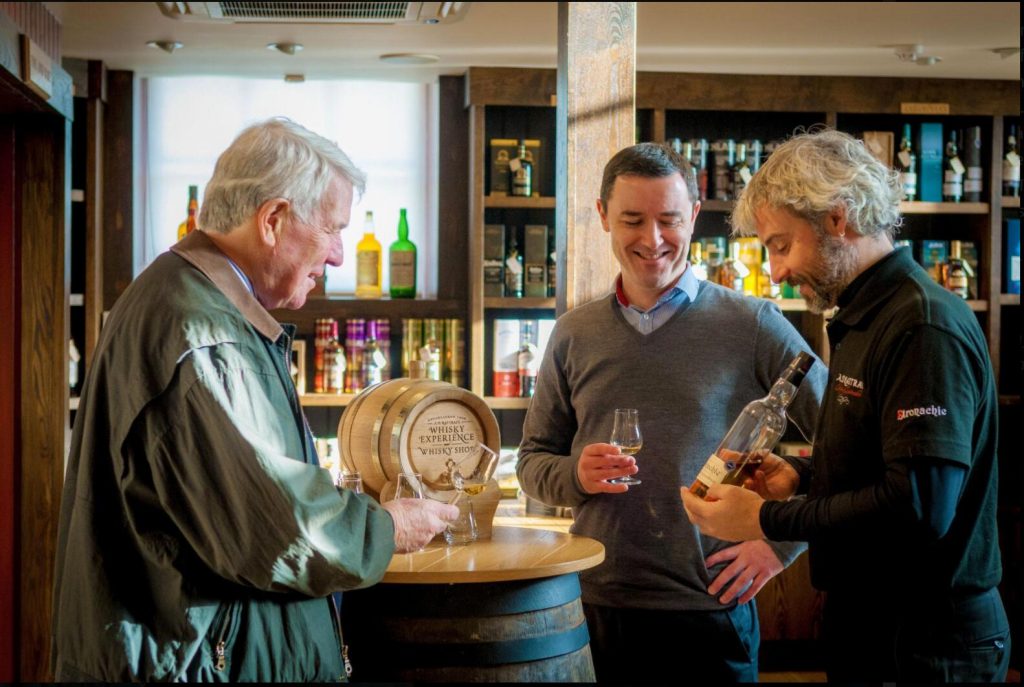
(A D Rattray Whisky Experience & Whisky Shop, Kirkoswald © A D Rattray)
Types of Scotch Whisky
There are three different types of Scotch whisky: malt whisky (also known as single malt), grain whisky and blended whisky. The basic types of Scotch are malt and grain, which are combined to create blends.
Malt Whisky
Malt whisky is made using malted barley, water, and yeast. The liquid is distilled in huge copper pot stills and is matured in whisky barrels for a minimum of three years (though most is matured for much longer than this). Single malt whisky is produced at one distillery while blended malt whisky is the product of two or more distilleries.
Grain Whisky
Grain whisky is made pretty differently. This time malted barley is mixed with unmalted barley and other cereals (such as maize and wheat) before the whole mixture is combined with water and then yeast. The resulting liquid is distilled in a tall patent still (or Coffey still) which looks very different to the traditional pot still and yields more spirit at a much higher strength.
Blended Whisky
Blended whisky involves an intricate process of mixing different single malts (anything from 15 to 50) with grain whisky. It’s a complex process – whiskies from different distilleries have characters all their own and don’t always blend happily with certain others – which is why the art of blending is so skilled and recipes are a closely guarded secret. Many blended whiskies are now household names, including Bells, Dewars, Whyte & Mackay, Johnnie Walker and The Famous Grouse.
Scotland’s Whiskey Regions
There are over 130 active whisky distilleries spread across Scotland, which are split into five whisky-producing regions: Campbeltown, Highland, Islay, Lowland and Speyside. Each of the whisky producing regions have a distinct flavor profile and characteristics to the whisky they produce. Where a whisky is made can have a huge bearing on its flavour, everything from the source of the water to the presence of peat in the local area will come through in the taste.
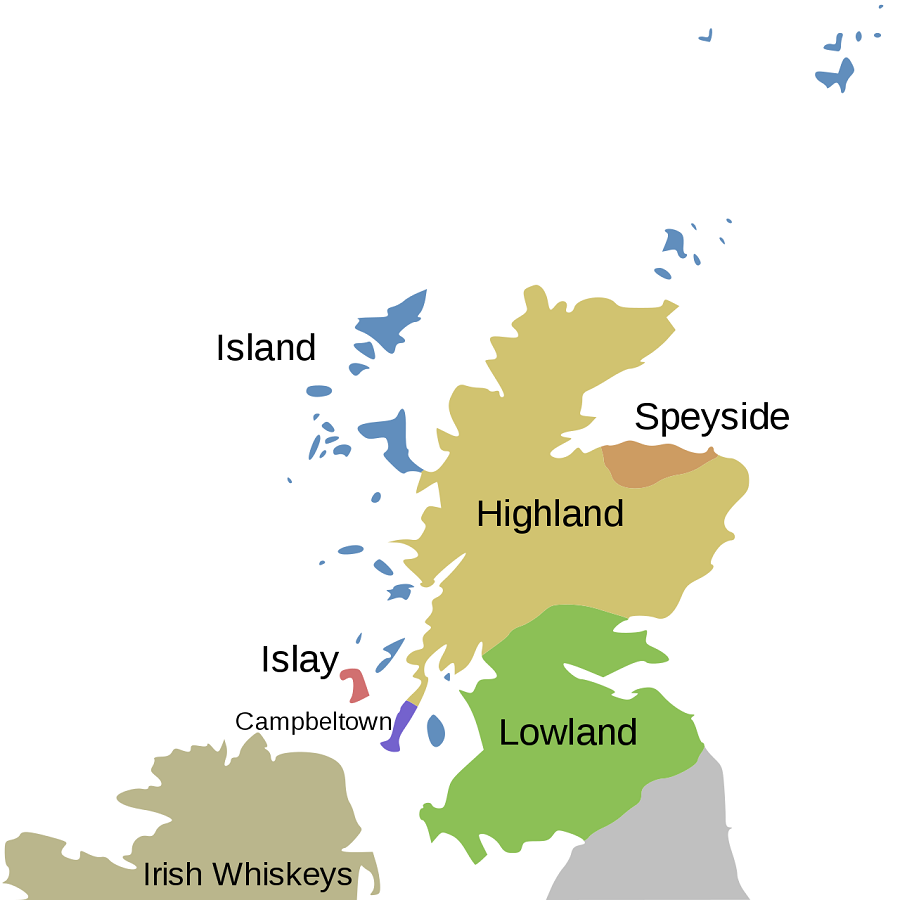
There are regional distinctions in Scotch malt whisky much like the wine appellations of France. Coastal whisky is often flavoured by the sea and a refined salinity can be found. There is always a sweetness; sometimes in omnipresence, sometimes lurking in the substrata. The robust, aromatic clarets of Bordeaux can be paralleled with the pungent, powered single malts from the Highlands. The sweet, fragrant, floral whites of Alsace are comparable with the gentle, fruity expressions form the Lowlands. The profusion of Scotch whisky distilleries is such that it is difficult, and unwise, to make broad generalizations. To truly master the subject, one must first embark on a lifetime’s journey-a journey of knowledge, history and experience.
Canadian Whiskey
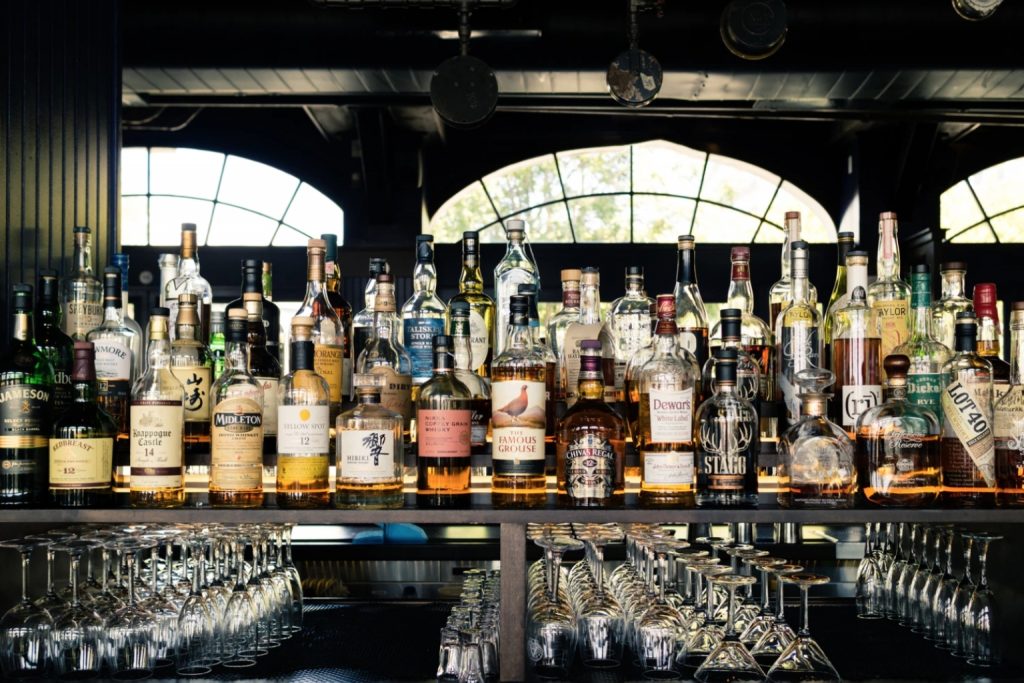
Where it’s from
Whisky is made in several of Canada’s provinces.
What it’s made of
Canadian whisky can be made of any cereal grain, and a finished product typically blends several types of whisky—such as wheat, corn, and rye—which are all milled, mashed, fermented, distilled, and matured separately.
Many of Canada’s first craft distillers started out trying to emulate Scotch single malts. However, the resulting Canadian single malt whiskies did not taste like Scotch whisky. Furthermore, they didn’t have the cachet of being imported from Scotland. Add this lack of Scottish authenticity to the new Scottish push on terroir and it seems almost ludicrous to try to replicate Scotch single malts in Canada. And why should they? Canada has its own well-established whisky traditions.
Instead, Canadian distilleries are beginning to make single malts that, while certainly are not Scotch whisky, are every bit as enjoyable. A new Canadian style is evolving, using Canadian grains, Canadian workers, Canadian water, Canadian ambiance, and Canadian terroir.
How it’s made
Canadian regulations state that anything labeled as Canadian whisky, Canadian rye whisky, or rye whisky must:
- Be made from a mash of cereal grain or cereal grain products
- Be aged in “small wood” (less than 700 liters) for at least 3 years
- Possess the aroma, taste, and character generally attributed to Canadian whisky
- Be mashed, distilled, and aged in Canada
- Contain no less than 40% ABV
Canadian whisky may contain added caramel coloring and flavoring. In fact, Canadian whisky can contain up to 9.09% added flavoring, as long as it’s a spirit aged at least 2 years in wood or a wine.
Most Canadian distilleries use column stills. Canadian whisky is typically a blend of whisky and flavoring whisky. Base whisky is made by distilling to a high proof in a column still and aging in a used barrel, resulting in a lightly flavored spirit. Flavoring whisky is typically distilled to lower proof in a column still and may undergo subsequent distillation in a pot still. It’s then aged in barrels (new or used) that will interact more with the spirit during maturation. Most Canadian whisky is the product of a single distillery.
Compared to Scotch whisky, Canadian whiskey does not have nearly as many legal requirements. There’s a lot of nuances here, though. For instance, the loose barreling regulations means that Canadian whisky can be aged in a much wider array of barrels from all over the world and wood sources. That means more flavors and techniques are invariably at play.
This is all not to say there aren’t distillers in Canada making super-refined rye whiskies with 100 percent rye mash bills or single malts with as varied and dialed-in with regards to distilling and aging as any scotch. There 100 percent are. It’s just that the average bottle on the shelf is regulated in a different way that allows for a lot more fiddling — for better or worse — to happen in each bottle of booze.
When it comes to taste, it really depends on what you’re looking for. Some of the best rye in the world is being distilled in Alberta with Canadian rye grains and aged in Vermont in American oak (WhistlePig). And Canada’s Crown Royal Northern Harvest Rye (90 percent rye mash bill) was named the best whisky in the world in 2016.
Overall, the following table shows the difference between Canadian Whiskey and Scotch Whiskey
| Spirit | Origin | Ingredients &
Manufacturing |
Flavor |
| Whiskey | All over the world | Distilled grain spirit | Depends on which you taste |
| Canadian Whisky | Canada | Mostly corn with other grains
Aged at least 3 years in wood barrels At least 40% ABV |
Golden color
Smooth Flavors of butterscotch and spice |
| Scotch Whisky | Scotland | Water and malted barley
May contain other cereal grains Aged 3 years in oak casks 40% to 94.8% ABV May be peated |
Amber color
Smooth Sometimes smokey Flavors of caramel, spice, orange peel, vanilla |
It is important to source premium raw material to produce your incredible vodka and whiskey drinks. And do not forget to choose qualified glass bottle manufacturer to make your final products outstanding. MC Glass Bottle can provide screen printing, frosting and decal on the surface of vodka glass bottle. We also can provide natural corks and pure glass material lids to suit your beautiful glass bottles. Do not hesitate to consult our experts to open a mold making a unique shaped bottle or bottle with embossed logo. No matter you are a new vodka maker plan to launch a small batch or a regular buyer, we will always be willing to listen to you and provide the best products, decoration and service.
Source:www.visitscotland.com
www.whiskyadvocate.com

